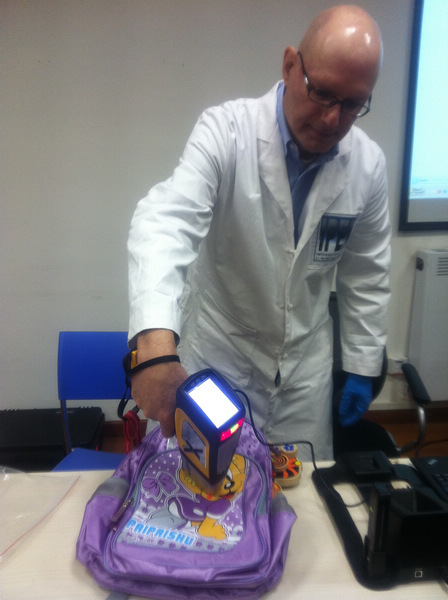Toxic metals common in kids' goods
 0 Comment(s)
0 Comment(s) Print
Print E-mail
China Daily, December 8, 2011
E-mail
China Daily, December 8, 2011
Nearly 10 percent of children's products sold in Chinese markets contain excessive lead, a harmful heavy metal, posing a threat to their health, Greenpeace said after a recent investigation.
In November, Greenpeace China bought 500 random children's products at shopping malls, supermarkets and wholesale markets in five cities - Beijing, Shanghai, Guangzhou, Wuhan and Hong Kong. It found that 10 percent failed to meet the national standard of lead content, and more than 30 percent contained five other hazardous heavy metals.
These substances tested for - lead, antimony, arsenic, cadmium, chromium and mercury - can seriously damage the nervous system, and can enter the body through breathing, the skin or mucous membranes and contaminated food.
"For example, lead, which is highly toxic and cumulative, will trigger obstacles for a child's mental and physical development and learning ability," said Wu Yixiu, a toxins prevention campaigner at Greenpeace China.
"Animal experiments have demonstrated that health hazards caused by exposure to heavy metals in childhood are likely to continue throughout life," said Zhang Yunhui, an associate professor at Fudan University's school of public health.
A document about lead poisoning in young children from the United States Centers for Disease Control and Prevention said there is no safe threshold for lead content in the human body and children should have no exposure to the substance.
A mandatory national standard for toy coatings issued by China's leading quality watchdog and the standards administration, which took effect in October 2010, set limits for the substances. The maximum of total content of lead is 600 mg per kg - dissoluble content limits were also set for eight other metals.
But Greenpeace questions the standards, saying the authorities set only a ceiling for total lead content but failed to cap the levels of other metals.
"Though there is possibility that children may swallow a toy, it is more common for them to touch, chew or sniff it," Wu said.
Some countries, including the US and Canada, set the lead content in toy coatings at 90 mg per kg.
Huang Ning, one of the drafters of the national standards and an expert from the national standards technical committee on paints and pigments, said the standards are a combination of international standards and those used by Chinese toy makers.
"The limits set for eight heavy metals are similar to those used in the European Union," Huang said.
The Chinese quality watchdog's latest random testing of toys, in May, found lead and chromium. Two of the 242 samples failed to meet the national limits on heavy metal content.
A manager at a Shenzhen-based plastic toy manufacturer, who gave his name only as Jin, said he knows that some toy makers established a self-testing system after the toy coating standards were issued.
"We conduct a quarterly random check of coatings," Jin said. "We don't dare to lower the quality of raw materials, because we can't afford the consequences of quality problems."







Go to Forum >>0 Comment(s)